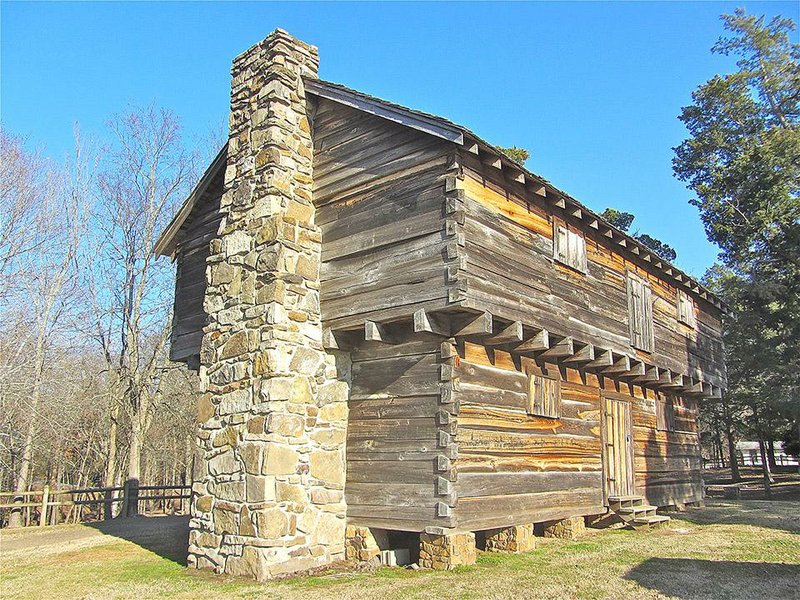CONWAY -- If you can name the first permanent white settlement in central Arkansas, consider yourself thoroughly versed on our state's history.
No, it's not Little Rock, which got its first permanent settler in 1820.
No, it's not Conway, even though that's this story's dateline. Established in 1875, bustling Conway is the closest present community to the correct answer.
We're talking about Cadron. And if that's news to you, don't feel bad. The settlement, laid out in 1818, no longer exists -- and hasn't since the 1830s.
Cadron's history is a case study in how rapidly a locale's fortune can rise or fall. Perched on a bluff along the Arkansas River five miles west of Conway, it's now the site of a park graced by a replica pioneer-era blockhouse.
The two-story structure is built of Arkansas cypress planks with a large fireplace at each end. It's the second replica constructed here to resemble the fortification shown in a sketch drawn in 1820 by visiting British naturalist Thomas Nuttall.
The first replica, erected in 1979 as a centerpiece of the new Cadron Settlement Park, was destroyed in a 1992 fire believed set by vandals.
Then the Faulkner County Historical Society and the Conway Chamber of Commerce, which had financed the project along with the U.S. Army Corps of Engineers, pitched in for a second reconstruction. It was completed in 1998.
The Arkansas Historic Preservation Commission's 1974 application to put the site on the National Register of Historic Places reports it was initially used by French fur traders in the late 18th century.
When Cadron became the first permanent European settlement, the impetus came from John McElmurry. He arrived as early as 1810, six years before a mail route was set up to serve residents.
On Nuttall's first visit in 1819, the naturalist reported a half-dozen families in residence and a busy tavern. "A cove of rocks here affords a safe and convenient harbor, and a good landing for merchandise," he wrote.
According to the application for historic status, Cadron was seriously considered to be Arkansas' territorial capital in 1819. It was the first seat of Pulaski County from 1820 to 1822 and then Conway County's seat from 1825 to 1828.
But political clout lay elsewhere, and McElmurry died in 1827. By 1831, the settlement had been abandoned. When Army Lt. Joseph W. Harris passed through in 1834 escorting a Trail of Tears group of Cherokees being herded west, he reported desolation:
"In the cluster of cedars above the bluff which looks down upon the creek and river, and near a few tall chimneys -- the wreck of a once comfortable tenement -- the destroyer has been most busily at work."
The original Cadron blockhouse served not only for defense but also as a trading post and community center. A historical marker near the replica commemorates the passing American Indians and their more than 50 deaths from cholera here.
The park's Tollantusky Trail, offering expansive views of the Arkansas River Valley, is named for a chief of the Cherokees believed to have lived at Cadron from about 1809 to 1817. He went to Washington and signed treaties that the United States broke with the Trail of Tears expulsions.
Cadron Settlement Park is west of Conway off U.S. 64 at the end of Arkansas 319. The park is open every day. For more information, call Faulkner County Museum, (501) 329-5918.
Weekend on 01/15/2015
